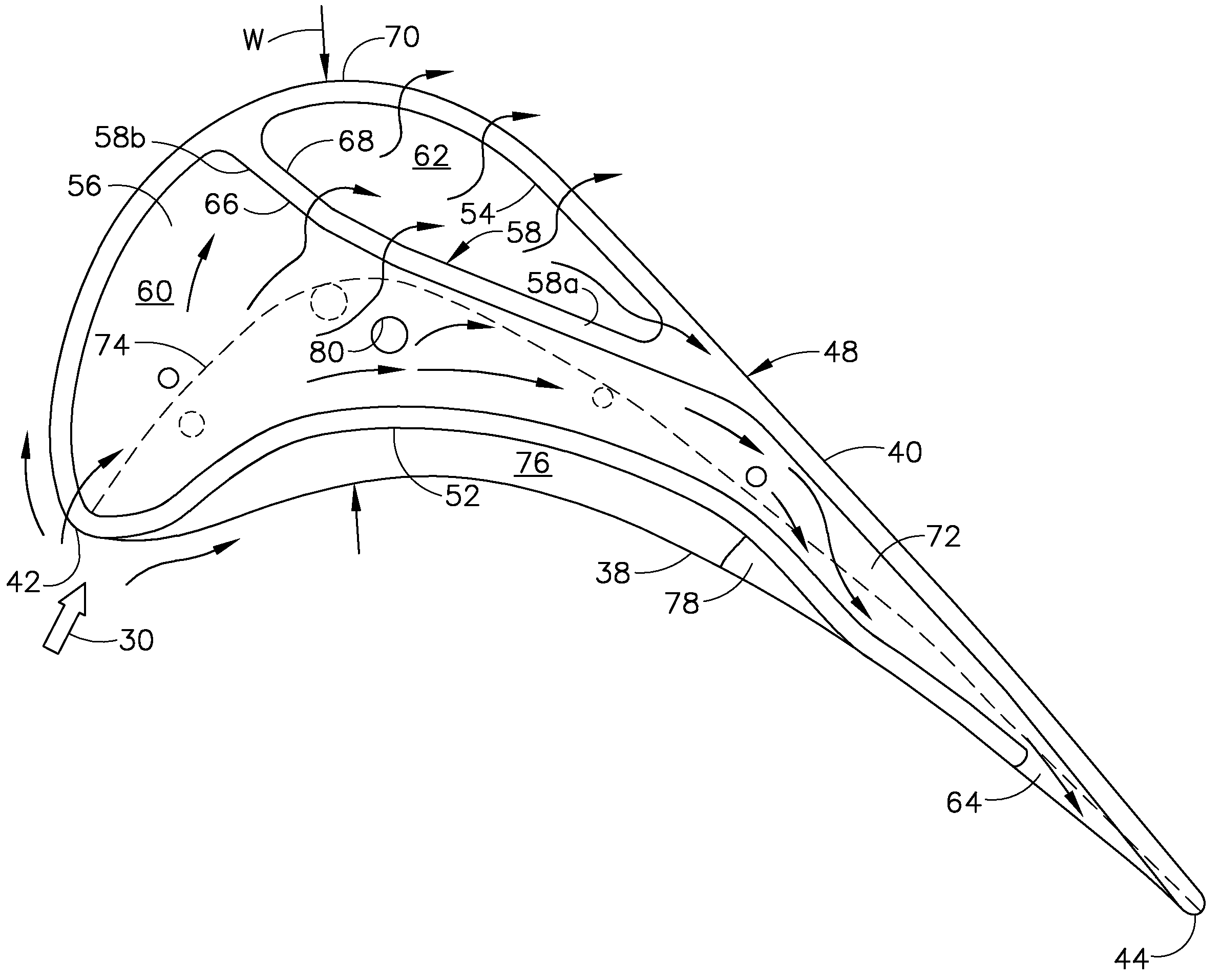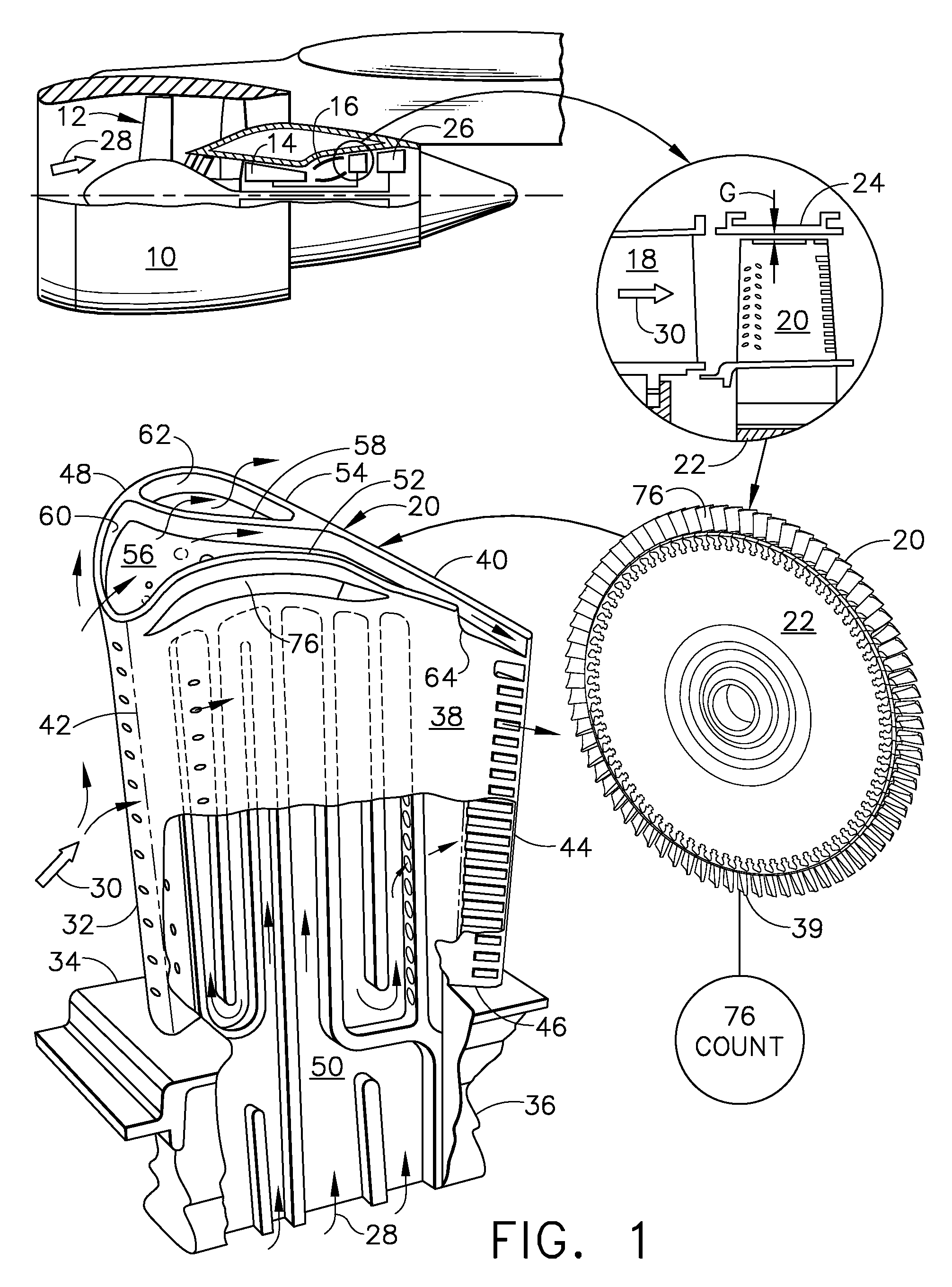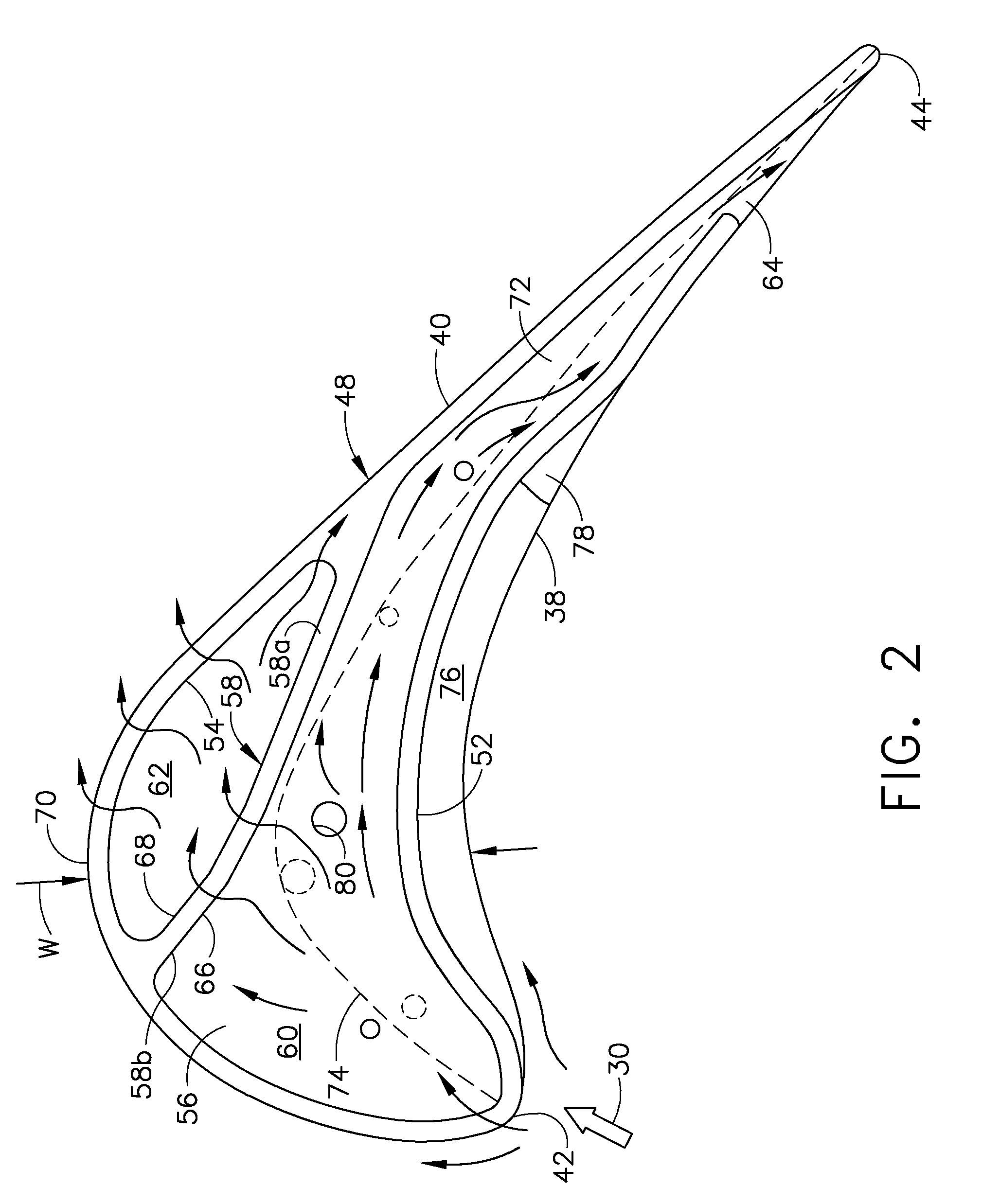Recovery tip turbine blade
- Summary
- Abstract
- Description
- Claims
- Application Information
AI Technical Summary
Benefits of technology
Problems solved by technology
Method used
Image
Examples
Embodiment Construction
[0030]Illustrated schematically in FIG. 1 is an exemplary turbofan gas turbine engine 10 mounted to an aircraft wing (shown in part) for powering an aircraft in flight.
[0031]The engine 10 is axisymmetrical about a longitudinal or axial centerline axis, and includes in serial flow communication a fan 12, compressor 14, and combustor 16 followed by a single-stage HPT. The HPT includes a nozzle 18 and a row of first stage turbine rotor blades 20 extending radially outwardly from a supporting rotor disk 22.
[0032]The row of blades 20 is mounted inside a surrounding turbine shroud 24 with a small radial clearance or tip gap G therebetween. And, a multistage LPT 26 follows the single stage HPT.
[0033]During operation, air 28 enters the engine and is pressurized in the compressor and mixed with fuel in the combustor. Hot combustion gases 30 then leave the combustor to power the HPT and LPT which in turn power the compressor and fan.
[0034]The exemplary turbine blade 20 is typically cast from ...
PUM
| Property | Measurement | Unit |
|---|---|---|
| Pressure | aaaaa | aaaaa |
| Width | aaaaa | aaaaa |
| Height | aaaaa | aaaaa |
Abstract
Description
Claims
Application Information
 Login to view more
Login to view more - R&D Engineer
- R&D Manager
- IP Professional
- Industry Leading Data Capabilities
- Powerful AI technology
- Patent DNA Extraction
Browse by: Latest US Patents, China's latest patents, Technical Efficacy Thesaurus, Application Domain, Technology Topic.
© 2024 PatSnap. All rights reserved.Legal|Privacy policy|Modern Slavery Act Transparency Statement|Sitemap



